 Technology
Technology  Technology
Technology  Humans
Humans 10 Everyday Human Behaviors That Are Actually Survival Instincts
 Animals
Animals 10 Animals That Humiliated and Harmed Historical Leaders
 History
History 10 Most Influential Protests in Modern History
 Creepy
Creepy 10 More Representations of Death from Myth, Legend, and Folktale
 Technology
Technology 10 Scientific Breakthroughs of 2025 That’ll Change Everything
 Our World
Our World 10 Ways Icelandic Culture Makes Other Countries Look Boring
 Misconceptions
Misconceptions 10 Common Misconceptions About the Victorian Era
 Mysteries
Mysteries 10 Strange Unexplained Mysteries of 2025
 Miscellaneous
Miscellaneous 10 of History’s Most Bell-Ringing Finishing Moves
 Technology
Technology Top 10 Everyday Tech Buzzwords That Hide a Darker Past
 Humans
Humans 10 Everyday Human Behaviors That Are Actually Survival Instincts
 Animals
Animals 10 Animals That Humiliated and Harmed Historical Leaders
Who's Behind Listverse?

Jamie Frater
Head Editor
Jamie founded Listverse due to an insatiable desire to share fascinating, obscure, and bizarre facts. He has been a guest speaker on numerous national radio and television stations and is a five time published author.
More About Us History
History 10 Most Influential Protests in Modern History
 Creepy
Creepy 10 More Representations of Death from Myth, Legend, and Folktale
 Technology
Technology 10 Scientific Breakthroughs of 2025 That’ll Change Everything
 Our World
Our World 10 Ways Icelandic Culture Makes Other Countries Look Boring
 Misconceptions
Misconceptions 10 Common Misconceptions About the Victorian Era
 Mysteries
Mysteries 10 Strange Unexplained Mysteries of 2025
 Miscellaneous
Miscellaneous 10 of History’s Most Bell-Ringing Finishing Moves
10 Forgotten Hollywood Scandals
They just don’t make scandals like they used to. Our instant access, 24/7 news and social media cycles grind out tabloid fodder faster than Apple can slap an “i” on any product. Along the way, the stories lose impact. Once upon a time, however, indignity carried plenty of weight. Long before the vogue of being famous for being famous, Hollywood royalty captured the hearts of the American audience. Fans adored and idolized their favorite stars. Scandals weren’t shocking because of what happened, but because of who they happened to. The shame of fallen stars meant more because the stars meant more.
Maybe Hollywood is a fairy tale, and always was a fairy tale. These are a few of her stories that have faded over time.
10 Elizabeth Taylor: Three’s A Crowd
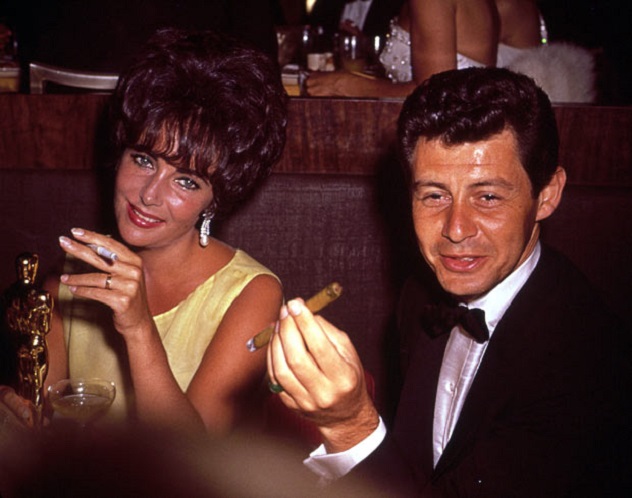
Imagine the Brangelina headlines playing out 50 years ago, back when Nikita Khrushchev made Time‘s 1958 man of the year, Eisenhower was in the White House, and Captain Kangaroo was on TV. Oscar winner Elizabeth Taylor, to riff on the old joke, believed in marriage so much that she took vows eight times. Marrying Richard Burton twice remains part of the Taylor legend. But it was her romance with Eddie Fisher that proved the most controversial. Brangelina had nothing on her.
Taylor married mega-producer Mike Todd in 1957. She became widowed when Todd perished in a plane crash barely one year into their marriage. The tragedy earned Todd the sad distinction of being the only husband Taylor did not divorce. The turn also provided Todd’s close pal, singer Eddie Fisher, the opportunity to console Taylor. Despite Fisher’s marriage with actress Debbie Reynolds, sympathy went the way of amour, and Liz and Eddie said “I do” the following year.
The Taylor-Fisher wedlock became unlocked within five years when Taylor came across Richard Burton, and Reynolds eventually forgave Taylor. Looking back on her loves, lost and found, Taylor once commented “I am a very committed wife. And I should be committed, too—for being married so many times.”
9 Lana Turner: Sweating The Sweater Girl
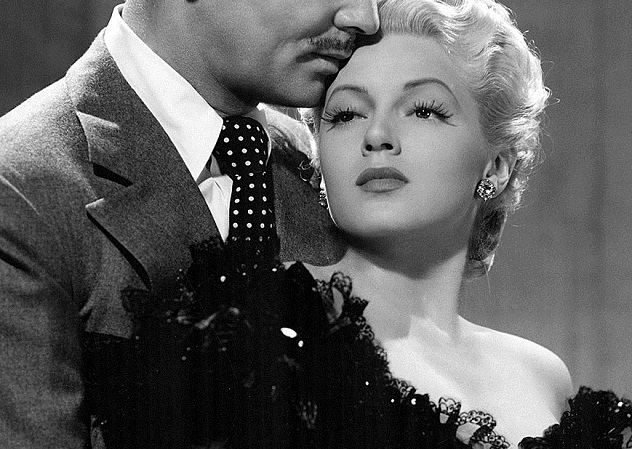
You may have heard the one about the starlet who was discovered while sipping on a soft drink at a soda fountain—that was Lana Turner. The actress once dubbed the “Sweater Girl” matched Elizabeth Taylor for turns at the altar, but her claim to scandal fame centers on an underworld lover.
Johnny Stompanato—a small-time, Los Angeles hood associated with gangster Mickey Cohen—became Turner’s lover in 1957. The reportedly torrid affair reached white heat on April 4, 1958. As testified in court, Turner’s 14-year-old daughter listened to the lovers quarreling big time at their Bel Air home. When Stompanato threatened to disfigure Turner, Cheryl grabbed an eight-inch carving knife and went to her mother’s defense. The teen fatally wounded the gangster in the gut, a justifiable homicide according to the coroner’s inquest. Within one week of the slaying, personal letters made their way into the press. One Stompanato love letter carried an ironic phrase: “You know, baby, I’m so lonesome for the touch of you, I could die.”
The court sent Cheryl to live with her maternal grandmother while Turner went on to score a box office smash with 1959’s Imitation of Life. Stompanato’s son, John II, brought a $750,000 damage suit against mother and daughter, charging that his father had been slain without cause. Lana and Cheryl settled out of court in the amount of $20,000.
8 Ingrid Bergman: Love, Italian Style
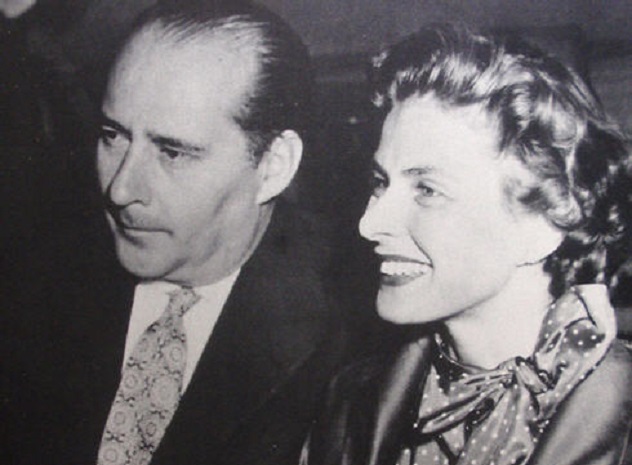
Ingrid Bergman was supposed to be different. She was supposed to be above the stuff of tawdry gossip. She’d won the Oscar for Gaslight in 1944 and appeared as Joan of Arc in 1949. But an extramarital affair? And becoming pregnant? Say it ain’t so, Joan.
Bergman met director Roberto Rossellini in 1949 on the set of Stromboli and nature took its course. The affair ended her 13-year marriage to Petter Lindstrom, and she left behind 10-year-old daughter, Pia. Her son with Rossellini, Robert, came into the world a matter of days before her divorce became finalized.
Rossellini played it mum when approached in Italy, despite swirling rumors. Once the story hit the States, the self-appointed guardians of the day’s morality had a field day. Religious groups, censorship boards, and various levels of government rallied the faithful. Charging that the love affair “tends to glorify adultery,” the call went out to ban Bergman off the cinematic map.
Even the U.S. Senate got in the act. Edwin C. Johnson (D-Colo.), chair of the body’s Commerce Committee, slammed Bergman, Rossellini, and the RKO film studio. The legislator accused Bergman of taking a “nose dive from the highest pinnacle of respectability, fame and glory, to the role of common mistress.” He summed up Rossellini as “vile and unspeakable” and “a common love thief.”
Six years, two more kids, and one divorce later, Bergman returned to triumph over Hollywood. She divorced Rossellini in 1956, the same year she starred in Anastasia, for which she received her second Academy Award. In 1972, Sen. Charles H. Percy entered an official apology to Bergman into the Congressional Record.
7 Jean Harlow: The Honeymoon Is Over
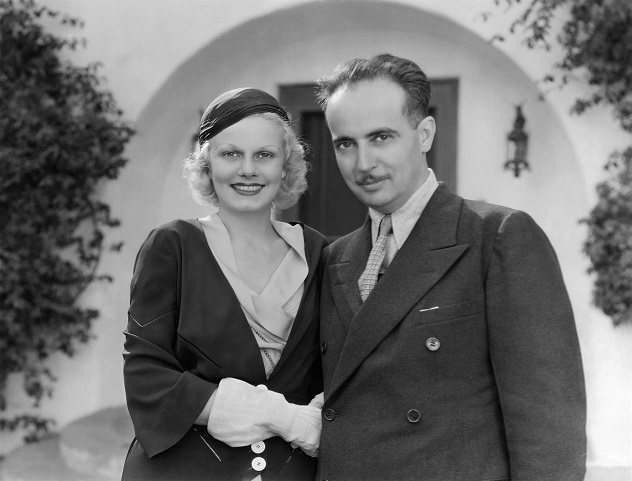
Paul Bern’s suicide note made it short and sweet:
“Dearest Dear, unfortunately this is the only way to make good the frightful wrong I have done you and to wipe out my abject humiliation. I love you. Paul. You understand that last night was only a comedy.”
The butler discovered the producer’s unclothed body—with a pistol in his hand and a gunshot wound in his head—on September 5, 1932. The event left his wife of two months, Jean Harlow, devastated.
The actress known as The Blonde Bombshell professed, “I can’t understand why this terrible thing should have happened. As for the note left by Paul, I have no idea what it means.” That wasn’t good enough for the police, reporters or movie audiences in 1932. Everyone and their mother wanted to know the reasons why the 42-year-old wanted to make a widow out of this sexy, 21-year-old star. Peculiarities thread their way through the story. Bern was notorious for being on the arm of the screen’s greatest sirens, but behind the public image, many considered him an incomplete man. There was plenty to be read between the lines, including that he never consummated his marriage to Harlow.
Then there was Dorothy Millette, Bern’s common-law wife from his New York days. Millette’s body was discovered in the Sacramento River two days following Bern’s suicide. Rumors persisted that she visited his home shortly before his death, as did the rumors that studio execs and assistants essentially ransacked the death scene to remove any embarrassing evidence long before the police arrived.
Years later, playwright, screenwriter, and former journalist Ben Hecht attacked the story in the pages of Playboy. His November 1960 article sparked enough controversy to compel District Attorney McKesson to re-probe the original probe, but he found nothing to investigate. For his part, Hecht admitted to Toronto newsmen, “My story was based on rumor and gossip. I have no evidence whatsoever. My report was based on a story that has been circulating in Hollywood for a long time.”
6 Jackie Coogan: Stealing From A Baby
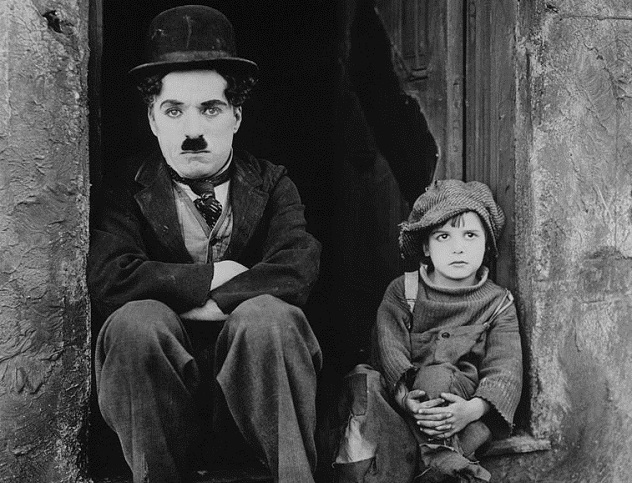
Can you picture Uncle Fester as a child star? Actor Jackie Coogan made his first splash 43 years before the Addams Family TV series. He became a star at age seven when he supported Charlie Chaplin in 1921’s The Kid. More significantly than that, he helped reform child labor laws by dragging his parents into court.
Coogan’s childhood success translated into plenty of scratch. In addition to acting fees, he also took in a pretty penny from product endorsements. In 1938—married to starlet Betty Grable and trying to make a comeback—he wanted his folks to show him the money, so he filed a legal action against his mother and stepfather that sought a reckoning of all those earnings. Exactly how much? By Coogan’s accounting, he should have socked away $4 million.
The story made the pages of Life magazine. The publication pitched their coverage in full support of Coogan, quoting his mother as saying “No promises were ever made to give Jackie anything.” His stepfather came off even more bluntly: “Every dollar a kid earns before he is 21 belongs to his parents. Jackie will not get a cent of his earnings.”
Coogan never made out. He eventually reached a settlement that netted him about $125,000, a far cry from the millions he claimed. His action, however, set a legal precedent. The California Child Actors Bill, popularly known as The Coogan Law, became state law in 1939.
5 Errol Flynn: In Like You-Know-Who
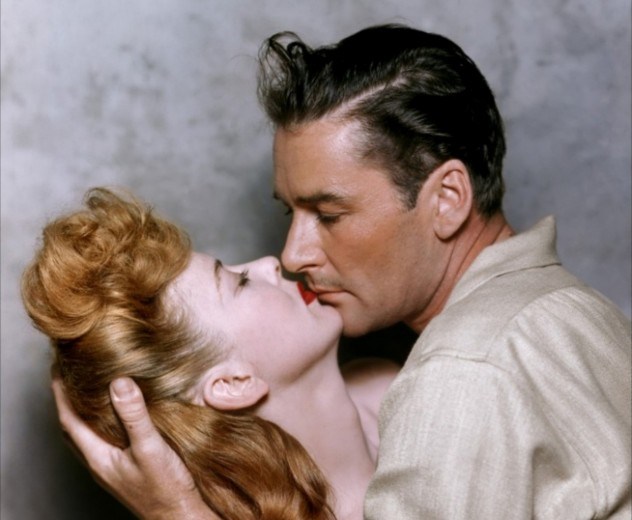
Bad publicity isn’t all bad. At least it wasn’t for the Warner Bros. swashbuckling hero, Errol Flynn. On October 16, 1942, police arrested Flynn on charges of sexually attacking 17-year-old Betty Hansen. The actor regained his freedom by posting a $1,000 bond.
With her sights set on breaking into Hollywood, Hansen candidly explained to authorities how she left her Lincoln, Nebraska home for a stint as a drugstore waitress in Hollywood. She admitted to having illicit relations with several studio employees in order to land an invitation to the September 27 Bel Air affair. “It was an afternoon swimming and dancing party. My boss wouldn’t let me off, so I quit my job to go.” According to Hansen, after a short rest from one too many cocktails, she allowed Flynn to escort her to an upstairs bedroom where they became intimate. “With my consent?” Hansen asked out loud. “Why, of course, with my consent.”
The minor claimed she never intended to charge anyone. Her sister, with whom she lived, brought the matter to the police. The state doubled-down the proceedings by adding in the statutory rapes charges brought by Peggy La Rue Satterlee from an August 1941 incident aboard Flynn’s yacht, Sirocco.
A jury of nine women and three men deliberated for 13 hours before acquitting Flynn. The actor had this to say: “My confidence now has been justified in essential American justice. I really mean it. I didn’t become an American citizen for nothing. The fair play I received during the trial proves that. I want to thank all those who stood by me during the trial.”
After the verdict, authorities sent Hansen home to her parents in Lincoln, Nebraska. Before leaving for her home in Applegate, California, Satterlee told a reporter, “I hate Flynn more than anybody else in the world. Maybe I’m better off the way it turned out, but I didn’t want it this way.” She added, “I knew those women on the jury would acquit him. They sat there and looked at him adoringly, just like he was their son or something. They never did believe he was guilty.”
The trial and all its coverage didn’t hurt Flynn’s career or reputation one bit. It even added a new phrase to our lexicon: “in like Flynn.”
4 Charlie Chaplin: A Boot For The Tramp
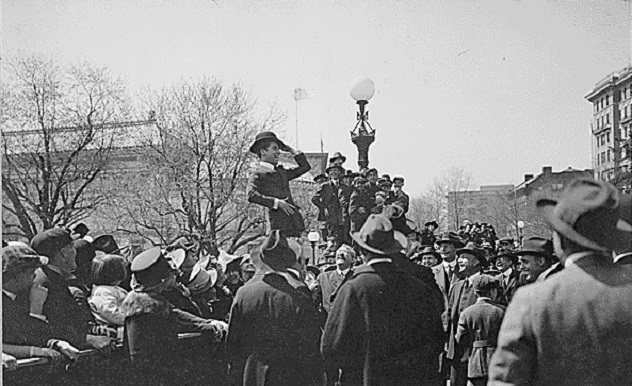
Charlie Chaplin’s film-making career began in 1914 and ran until 1967. Between his legendary status and longevity, “The Little Tramp” received his share of bad ink, deserved and otherwise. His expulsion from the United States tops them all.
In September 1952, Chaplin sailed for Europe to promote his latest flick, Limelight. Two weeks after his departure, the US attorney general ordered immigration services to refuse the actor-director re-entry, pending his agreeing to an investigation into his political activities.
In October, Chaplin surrendered his re-entry permit. The star proclaimed, “I have been the object of lies and vicious propaganda by powerful reactionary groups who, by their influence and with the aid of America’s yellow press, have created an unhealthy atmosphere in which liberal minded individuals can be singled out and persecuted . . . I find it virtually impossible to continue my motion picture work, and I have therefore given up my residence in the United States.”
Chaplin returned to a forgiving US government and a sentimental Hollywood in 1972. He received an honorary Oscar that year, upstaging the likes of Jane Fonda and Gene Hackman. At the same time, Limelight finally received a full release in the states, including Los Angeles, and qualified for Academy Award nominations. In 1973, Chaplin received his one and only “regular” Oscar when Limelight won best music score.
3 Thomas H. Ince: Remembered By Rumor
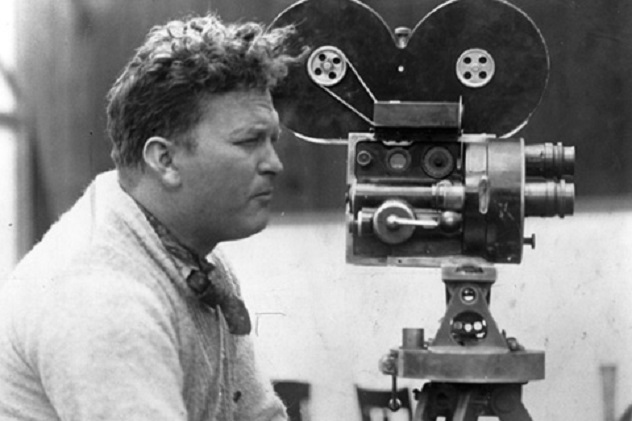
Ince’s death will forever overshadow his accomplishments. Among his credits, Ince is cited as helping to establish the studio system, defining the role of producer, and developing the use of the continuity script. Instead, he’s not remembered so much for how he died, but rather for how he could have died.
The official story goes that Ince joined the party on William Randolph Hearst’s yacht on November 16, 1924. Other guests included Hearst’s mistress Marion Davies, Charlie Chaplin, New York movie columnist Louella Parsons, author Elinor Glyn, and Dr. Daniel Carson Goodman. Ince grew terribly ill that evening, perhaps from severe indigestion, and Dr. Goodman escorted him off the yacht. They traveled by train toward Los Angeles, departing for a hotel room in Del Mar due to Ince’s worsening condition. Ince’s wife, Nell, was contacted, and she joined them at the hotel where another physician was called before Ince returned home. On November 19, Ince died of a heart attack.
The series of events play screwy enough, but hardly appear worthy of scandal, conspiracy theories, or worst of all, suspicions of murder. But that’s the gossip that’s forever surrounded the death of Thomas Ince.
Prevailing legend puts it that Hearst became suspicious of Davies and Chaplin. A case of mistaken identity occurred on board, and Hearst shot Ince. As one of the most powerful media moguls of his day, Hearst could theoretically have covered up anything he liked. Maybe all those maneuverings from boat to train to hotel to home don’t add up to the smoothest of conspiracies, but it’s hard to ignore other details.
Since the death certificate claimed natural causes, there was no inquest, no autopsy. Funeral services were held on November 21 and the body summarily cremated. Nell Ince left shortly for Europe after a trust fund had been set up for her by Hearst. Parsons received a lifetime contract from Hearst after the incident, along with boosted syndication. Add to that conflicting reports from nearly every guest involved, and we get a legend that’s too large to ignore. It’s large enough to blot out the achievements of one of Hollywood’s true pioneers.
2 Fatty Arbuckle: A Bad Rappe
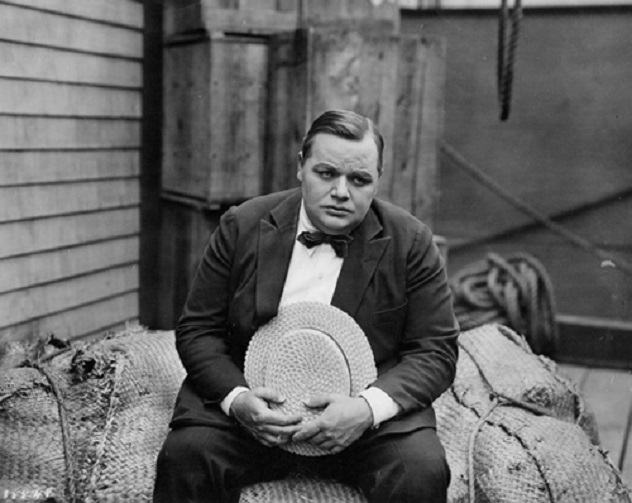
Scandals can be murder, even when a charge is dropped to manslaughter. In the case of Roscoe “Fatty” Arbuckle, scandal murdered his career.
The rotund comedian had shot to Hollywood’s heights in a matter of five years. In 1918, he signed a three-year contract for the outrageous payout of $3 million, but his meteoric rise crash-landed for good three years later. A high-profile court case thick with melodrama brought him down—a Hollywood superstar, murder accusations, a politically ambitious district attorney, dubious witnesses, and more than its share of sexual overtones.
On September 11, 1921, police arrested Arbuckle after Virginia Rappe fell seriously ill at his September 5 party. Four days later, she died at a nearby hospital. Originally charged with murder, Arbuckle suffered accusations of violent sexual assault, and he remained in jail three weeks before receiving bail on a reduced rap of manslaughter. Three trials held over the following seven months ended in Arbuckle’s acquittal.
The jury went out for six minutes and deliberated for only one. According to foreman Edward Brown, “Acquittal is not enough for Roscoe Arbuckle.” That turned out to be too true. The studios ran from Arbuckle like smallpox. Legal fees and related costs wiped out his fortune. An attempted reconciliation with his wife ended in failure.
A ruined Arbuckle found little success for the next 10 years, whether in Hollywood or abroad. Hope finally returned to the comic filmmaker after completing a series of two-reelers that impressed Warner Bros. The studio decided to give him a shot at directing a feature film on June 28, 1933. That same evening, Arbuckle died in his sleep from a heart attack at the age of 46.
1 Peg Entwistle: The Dream Is Over

Oscar Levant once said, “Behind the phony tinsel of Hollywood lies the real tinsel.” The death of actress Peg Entwistle is an ugly, symbolic expression of that thought.
On September 16, 1932, Entwistle found herself a flop at the age of 28. In the previous two years, she’d landed only one film role, and RKO had declined to renew her contract. That evening, she decided to pay one last visit to the famous Hollywood sign. Next to her neatly folded coat, she set her purse on the ground. She climbed up the maintenance ladder until she reached the top of the “H.” Then she leaped to her death.
Two days later, a hiker discovered the tragedy, finding this note in Entwistle’s purse: “I am afraid I am a coward. I am sorry for everything. If I had done this a long time ago, it would have saved a lot of pain. P.E.”
Ben Solomon’s got his own list of sorts going, three yarns of hard-boiled detective every month. Samples, subscription info, and more details can be found here.








